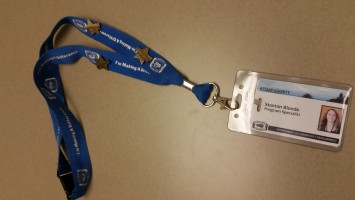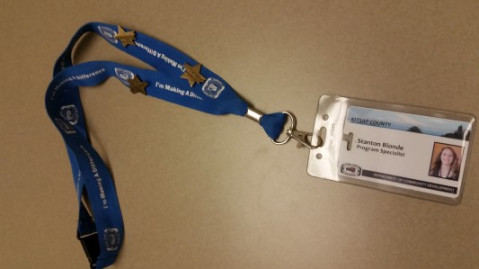Widgetized Section
Go to Admin » Appearance » Widgets » and move Gabfire Widget: Social into that MastheadOverlay zone
Army Leadership Doctrine (ALD) – It Makes a Difference
The views expressed are those of the author and do not necessarily reflect the views of ASPA as an organization.
By Larry Keeton
September 15, 2017
In 2006, I was one of two finalists for an assistant city manager’s job. Being a retired Army Colonel, the City Manager asked me if my “military leadership style” could be adapted to city government. Puzzled, I asked for a definition. After several moments, he responded, “You know. You give orders. People obey.” Sadly, I’ve found his Draconian view prevalent during my 14 years in local government.
 “Leadership is the heart of the public administration mission,” O’Leary, Orr and Bennett report in the July/August 2017 Public Administration Review. Yet they and others find the literature “meager,” “muted and underdeveloped.” Academia ignores it writes Professor Charles Szypszak in Military Leadership Lessons for Public Service.
“Leadership is the heart of the public administration mission,” O’Leary, Orr and Bennett report in the July/August 2017 Public Administration Review. Yet they and others find the literature “meager,” “muted and underdeveloped.” Academia ignores it writes Professor Charles Szypszak in Military Leadership Lessons for Public Service.
At a time when a good leadership model is sorely needed, practitioners should consider Army Leadership Doctrine (ALD).
Army leadership is “the process of influencing people by providing purpose, direction, and motivation while operating to accomplish the mission and improving the organization.” Let’s examine the methods.
- Providing purpose: Defending our way of life is a meaningful ideal. But, it quickly loses luster hunkered down in a muck filled hole as heavy winter rains soak one’s uniform. Explanation provides purpose. Learning the “why” gives soldiers knowledge their efforts have merit. Simon Sinek agrees. Great leaders inspire action by providing the why, how, and what.With purpose, Army leaders quickly learn transparency and honesty are crucial. Soldiers have a right to know. Their lives are on the line. Just do it because I said so doesn’t inspire trust and confidence when all hell breaks loose.
- Providing direction: Crucial is clear communications about what’s to be done and how it’s to be achieved. Closely linked are proper training and resourcing. When it time to act, Army leaders trust and rely on “the point of the spear” to accomplish the mission. They arm them commander’s intent.An Army adage states the plan is only as good as first contact. Conditions change but the mission remains paramount. Duly equipped with intent, soldiers can adapt their efforts to overcome impeding obstacles. Navy Captain (Retired) David Marquet’s provides an excellent place to start in understanding the concept.
- Providing motivation: All the reasons and directions are meaningless without an individual’s willingness. Giving commands don’t inspire. Caring motivates. Army leaders are expected to care about those they have the responsibility to lead. They have a visible presence. They share in the hardships of their people. They continually stress the Army’s values of loyalty, duty, respect, selfless service, honor, integrity and personal courage. In short, they create what Simon Sinek calls a circle of safety in their unit.
The definition goes beyond methods. It establishes the objectives of mission accomplishment and organizational improvement. Mission accomplishment is understandable, but improvement means making a positive difference in the unit. It emphasizes the need for continual growth in both leaders and organizations.
Though they share many values and motivations, civilians aren’t soldiers. Does ALD work in local government?
Hired as the Director of Community Development (DCD) in 2006, I was tasked  to fix the business practices of a department in turmoil. Citizens and County Commissioners were frustrated and angry. Permits languished, complaints abounded, a shell-shocked staff hunkered down. Not the place to work.
to fix the business practices of a department in turmoil. Citizens and County Commissioners were frustrated and angry. Permits languished, complaints abounded, a shell-shocked staff hunkered down. Not the place to work.
When I left, the Department had earned state and national recognitions for its process improvements. Grant monies rolled in due the department well-deserved reputation for environmental protection efforts. Citizens and stakeholder believed staff cared and were allies in finding solutions. DCD had become the county’s premier place of employment.
How was this achieved?
- Purpose: Increased county revenues relies on new construction. As the permitting agency, we directly impacted these revenues. Thus, the county’s and staff’s financial well-being were linked to their ability to issue, not delay, permits.
- Direction: Get applicants to yes within the scope of the county’s code. Look for solutions, not roadblocks. Integral to our efforts was Lean Process Improvement methodologies.
- Motivation: From day one, I, and the leadership team, became the buffers between complainants and staff. We listened, investigated, course corrected when necessary. As significant, we defended staff decisions more frequently than overturning them. Staff received accolades by our awarding “Making A Difference Stars” during monthly meetings. In short, we cared.
High performing organizations require leaders focused on creating environments where people are viewed as players, not pawns. A place where trust reigns high. Army Leadership Doctrine offers such a path.
Americans recognize this. Since 1997, the military has earned the highest level of trust and confidence over all other institutions.
If practitioners seek knowledge as how to apply ALD to their environment, start with Be Know Do: Leadership the Army Way by Frances Hesselbein and General Eric K. Shinsecki (USA Retired). Then attend the ASPA National Convention which includes a military track.
President Dwight Eisenhower once remarked any damn fool can hit people over the head to achieve something. That’s assault, not leadership. “The essence of leadership is to get others to do something because they think you want it done and because it is worth while doing…”
Author: Larry Keeton is a retired public administrator with over 44 years of successfully leading military and local government organizations ranging in size from 10 to 1300 people. Successful change management efforts and results in the organizations he led have received state and national recognition. He can be reached at [email protected].






Follow Us!